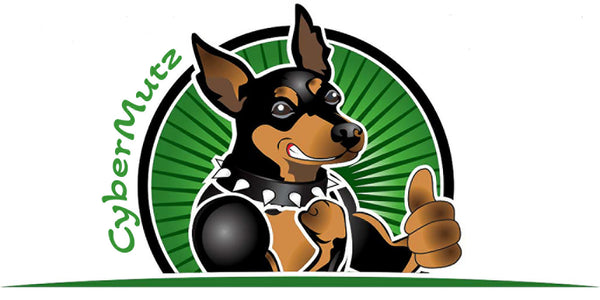
🐾 Understanding Your Dog’s Fear Triggers
Share
🐾 Understanding Your Dog’s Fear Triggers
Why They Happen — and How You Can Help
Is your dog terrified of the vacuum? Panics during thunderstorms? Bolts from skateboards like they’re monsters?
Just like people, dogs have their own fears — and while some seem random to us, they’re very real to them.
If your dog reacts with trembling, barking, hiding, or aggression, they may be dealing with a fear trigger. The good news? You can help them feel safe, secure, and supported — without force or frustration.
Here’s how to identify your pup’s fear triggers and guide them toward calm confidence.
🧠 What Is a Fear Trigger in Dogs?
A fear trigger is anything that causes a sudden, stress-based reaction in your dog. It might be:
-
A specific sound (thunder, fireworks, vacuum)
-
A visual stimulus (hats, umbrellas, bikes)
-
A situation (vet visits, car rides, strangers)
-
Even certain surfaces (slippery floors, grates)
These triggers activate your dog’s “fight, flight, or freeze” response. For some dogs, fear shows up as:
-
🐕 Shaking or hiding
-
🐾 Barking, lunging, or growling
-
🐕🦺 Clinginess or trying to escape
-
🚫 Refusal to move forward
Some dogs only have one or two triggers. Others may be more sensitive or reactive across the board — especially if they’ve had a rough start in life.
🔍 How to Identify Your Dog’s Triggers
Watch for body language changes when something stressful is about to happen:
-
Ears pinned back
-
Tail tucked
-
Panting or yawning
-
Pacing or scanning
-
Whale eye (showing the whites of their eyes)
📝 Tip: Keep a trigger journal. Write down:
-
What happened
-
Where it happened
-
What time
-
Who/what was involved
This will help you spot patterns and plan training strategies.
🧘♀️ How to Help Your Dog Work Through Fear
You can’t just “snap them out of it” — but you can gently rewire their response with time, love, and training.
✅ 1.
Use Desensitization + Counterconditioning
Expose your dog to the fear trigger at a very low intensity, and pair it with something awesome (like treats or play).
Example: Play low-volume thunder sounds during treat time.
Gradually increase the exposure over time. This helps your dog form new, positive associations.
✅ 2.
Create a Safe Zone
Give your dog a designated “calm cave”:
-
Use a crate, closet, or cozy corner
-
Add a blanket, soft toys, and water
-
Play calming music or white noise
🐾 CyberMutz Pro Tip: A soft, comfy dog tank top can add light pressure that mimics swaddling — like a gentle doggie hug.
✅ 3.
Stay Calm & Avoid Over-Reassuring
Your dog takes emotional cues from you. Speak in a neutral tone, don’t force interaction, and avoid dramatic “poor baby!” responses — these can reinforce anxiety.
Instead, calmly redirect with something they love: toys, training cues, or just chill time by your side.
✅ 4.
Consider Support Tools
If the fear is severe, try:
-
Natural calming supplements (ask your vet)
-
Pheromone diffusers (Adaptil)
-
Anxiety wraps or calming apparel
-
Working with a certified positive reinforcement trainer
🚫 What
Not
to Do
-
❌ Don’t punish fear-based behaviors — it makes things worse
-
❌ Don’t force them toward the trigger
-
❌ Don’t ignore signs of stress
Fear is real. Your dog isn’t being “bad” — they’re trying to cope the only way they know how.
❤️ Final Woof
Every dog has a story — and fear doesn’t make them any less lovable. In fact, helping your dog feel safe is one of the most powerful ways to deepen your bond.
With a little patience, consistent training, and the right tools, your pup can go from fearful to fearless.
